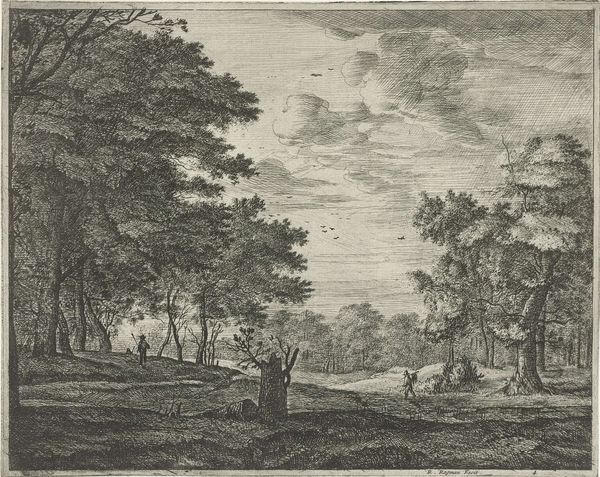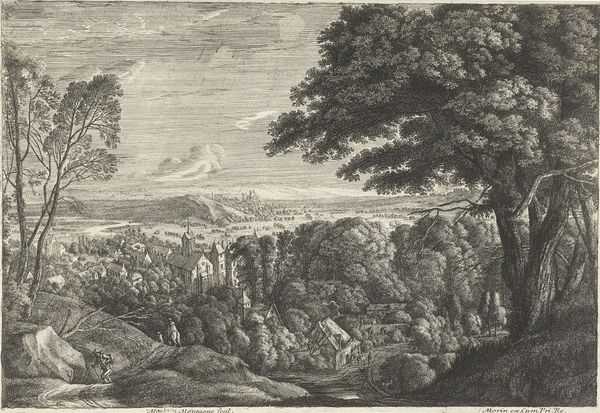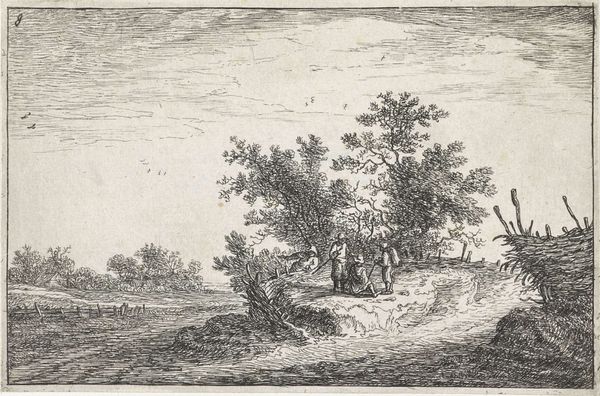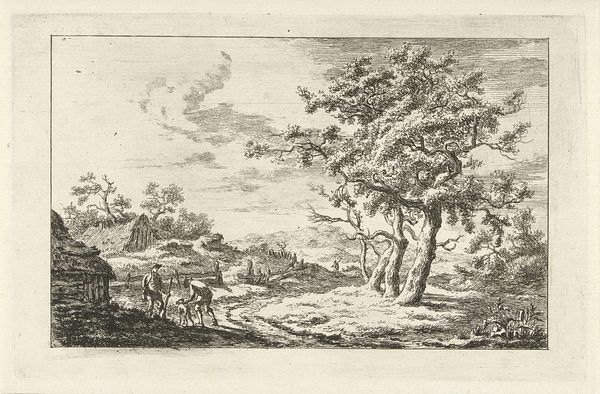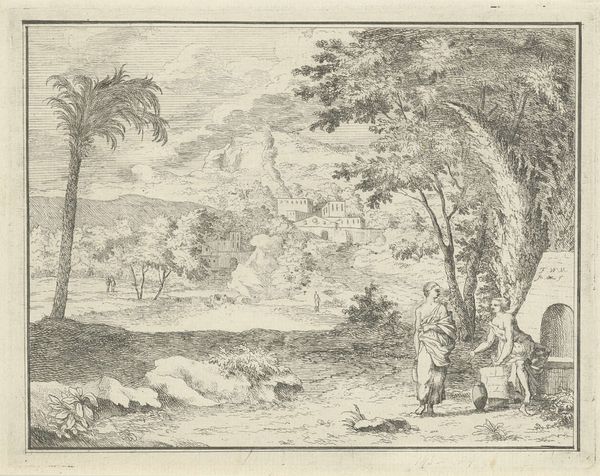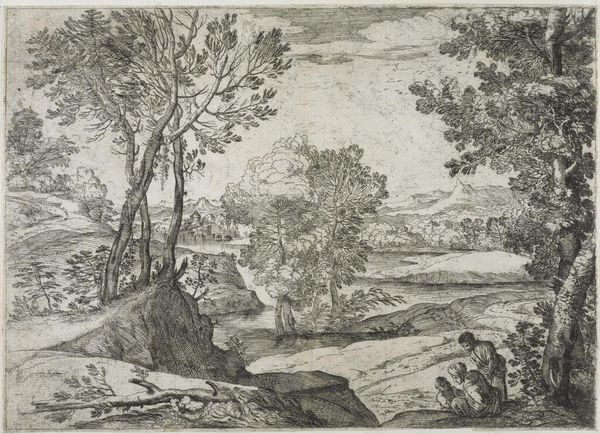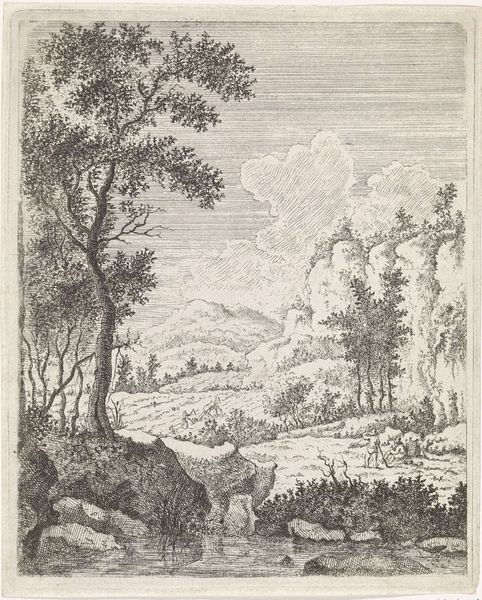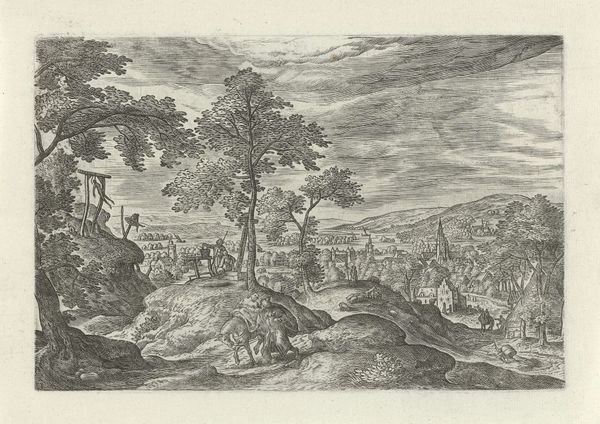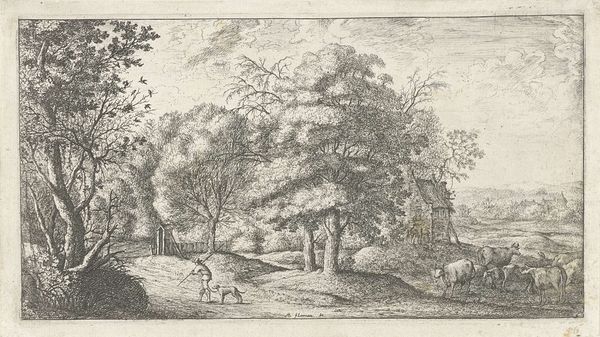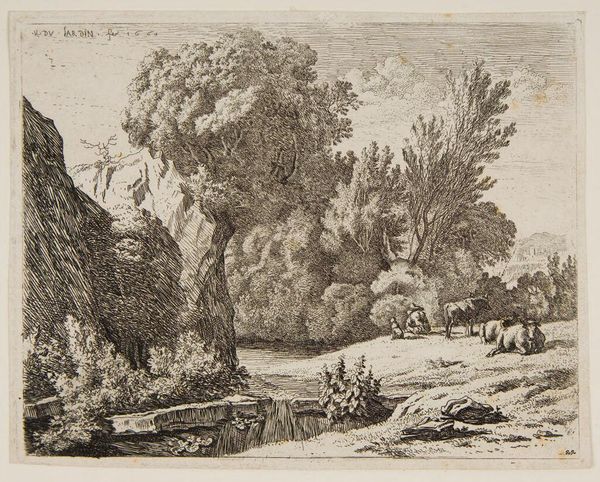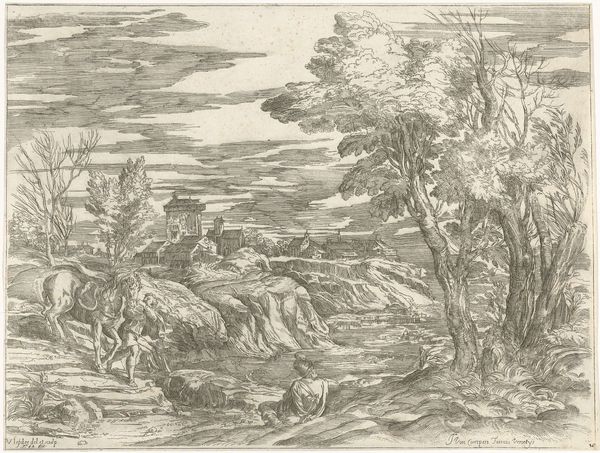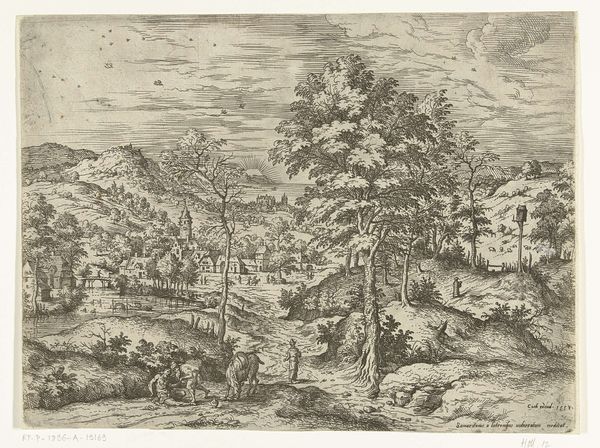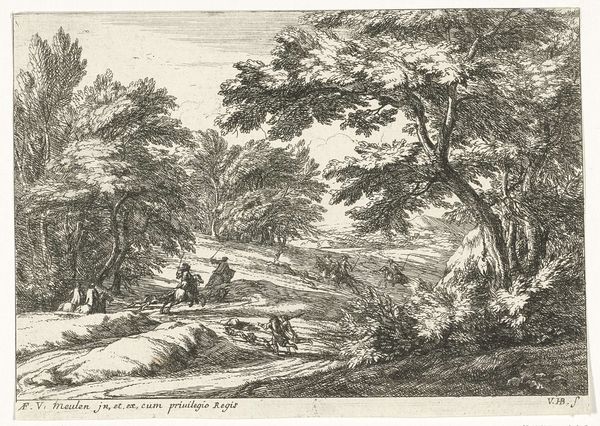
print, engraving
#
baroque
# print
#
landscape
#
genre-painting
#
engraving
Dimensions: height 145 mm, width 234 mm
Copyright: Rijks Museum: Open Domain
Editor: This is Matthieu van Plattenberg’s engraving, "De kleine wagen," placing it somewhere between 1617 and 1660. The density of the trees, the dog bounding forward… it evokes a journey, but also perhaps a flight into the wilderness? How do you read its symbolic imagery? Curator: It’s interesting that you interpret this as a potential flight. Indeed, the path carries strong symbolic meaning across centuries and cultures. Is the path one of escape, perhaps? Or might the “kleine wagen” – the small wagon - instead evoke labor and the everyman in a more literal manner? I’m drawn to the human desire to control or categorize nature that these landscapes, or “genre paintings” embody. How might van Plattenberg be portraying humankind’s place within nature? Editor: That's fascinating - the "everyman." It challenges my initial assumption. The trees do seem overpowering, which maybe diminishes the role of people, making them, as you say, commonplace within nature. Do you think there's a spiritual undercurrent as well, considering the time period? Curator: Spirituality of that time very much tied nature and divinity. Notice how the light breaks through the thick canopy—creating almost a sacred glow, if you will. This use of light reminds us of that connection, offering a glimpse into the divine within the earthly. The symbols he used tie into deeper psychological patterns of humans searching for security and meaning, and you can almost feel this search, etched in fine lines. Editor: That's a really powerful point about searching. Seeing it as a search makes it feel less about escaping or everydayness, and more a universal human story. Curator: Precisely. Van Plattenberg's visual language speaks to a universal, ongoing dialogue with the world around us, encoded into the work. Editor: I learned to consider both the overt subject and the underlying themes. It enriches the experience, doesn’t it? Curator: Absolutely. This landscape, like all artworks, acts as a mirror reflecting our collective consciousness across time.
Comments
No comments
Be the first to comment and join the conversation on the ultimate creative platform.
